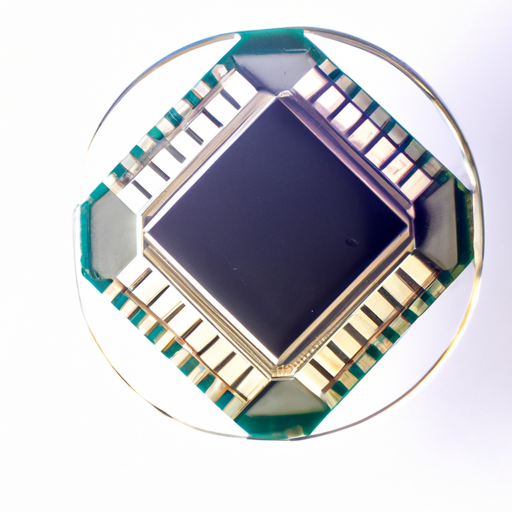Title: Exploring the Versatile Product Features of Oscillators

1. Functionality of Oscillators (200 words) Oscillators are primarily designed to generate continuous waveforms with a specific frequency and amplitude. They convert direct current (DC) into alternating current (AC) by utilizing feedback mechanisms. The key functionality of oscillators lies in their ability to maintain a stable output frequency, ensuring precision and reliability in various applications. By providing a consistent frequency signal, oscillators enable synchronization and coordination between different electronic components.
2. Types of Oscillators (300 words) There are several types of oscillators, each with its unique features and applications. Some of the commonly used oscillators include:
a) Quartz Crystal Oscillators: These oscillators utilize the piezoelectric properties of quartz crystals to generate precise and stable frequencies. They are widely used in applications such as clocks, radios, and microprocessors.
b) Voltage-Controlled Oscillators (VCOs): VCOs allow the frequency of the output waveform to be adjusted by varying the input voltage. They find applications in frequency modulation (FM) radios, phase-locked loops (PLLs), and wireless communication systems.
c) Relaxation Oscillators: These oscillators generate waveforms by charging and discharging a capacitor through a resistor. They are commonly used in applications such as timers, pulse generators, and audio tone generators.
d) Phase-Locked Loop (PLL) Oscillators: PLL oscillators use feedback loops to synchronize the output frequency with a reference signal. They are extensively used in frequency synthesis, clock generation, and data recovery circuits.
3. Key Features of Oscillators (400 words) Oscillators possess several features that make them versatile and adaptable to various applications. Some of the prominent features include:
a) Frequency Stability: Oscillators offer excellent frequency stability, ensuring that the output waveform remains consistent over time. This stability is crucial in applications where precise timing and synchronization are required.
b) Frequency Tunability: Certain types of oscillators, such as VCOs, provide the ability to adjust the output frequency within a specific range. This tunability allows for flexibility in applications where frequency modulation or frequency hopping is necessary.
c) Low Phase Noise: Oscillators with low phase noise produce clean and accurate waveforms, minimizing distortion and interference. This feature is particularly important in high-frequency applications, such as wireless communication systems and radar.
d) Start-Up Time: The start-up time of an oscillator refers to the time it takes for the device to stabilize and produce a consistent output waveform after being powered on. Oscillators with shorter start-up times are preferred in applications where rapid signal generation is required.
e) Power Consumption: Oscillators are available in various power consumption levels, allowing users to choose the most suitable option based on their specific requirements. Low-power oscillators are commonly used in battery-operated devices to maximize battery life.
f) Temperature Stability: Oscillators designed with temperature compensation mechanisms offer stable performance across a wide range of operating temperatures. This feature is crucial in applications where the oscillator may be subjected to varying environmental conditions.
g) Output Waveform Shape: Oscillators can generate different types of waveforms, including sine waves, square waves, triangle waves, and sawtooth waves. The ability to produce specific waveform shapes allows for compatibility with different electronic components and applications.
4. Applications of Oscillators (300 words) Oscillators find applications in numerous industries and technologies. Some of the key areas where oscillators are extensively used include:
a) Telecommunications: Oscillators play a vital role in telecommunications systems, providing stable clock signals for data transmission, synchronization, and modulation/demodulation processes. They are used in mobile phones, satellite communication systems, and fiber-optic networks.
b) Audio Systems: Oscillators are an integral part of audio systems, generating the required frequencies for sound synthesis, tone generation, and audio signal processing. They are used in musical instruments, audio amplifiers, and audio recording equipment.
c) Medical Devices: Oscillators are utilized in medical devices such as ultrasound machines, electrocardiograms (ECGs), and magnetic resonance imaging (MRI) systems. They provide precise timing and synchronization for accurate diagnostic measurements.
d) Aerospace and Defense: Oscillators are crucial in aerospace and defense applications, including radar systems, navigation systems, and satellite communication. They ensure accurate timing and synchronization for critical operations.
e) Consumer Electronics: Oscillators are present in various consumer electronic devices, including televisions, radios, clocks, and digital cameras. They provide stable timing signals for seamless operation and user experience.
Conclusion (100 words) Oscillators are indispensable components in modern technology, providing stable and accurate frequency signals for a wide range of applications. Their versatility, functionality, and diverse features make them essential in telecommunications, audio systems, medical devices, aerospace, and consumer electronics. By understanding the product features of oscillators, we can appreciate their significance in enabling seamless communication, precise timing, and synchronization in various industries. As technology continues to advance, oscillators will continue to evolve, offering even more advanced features to meet the ever-growing demands of the digital age.






